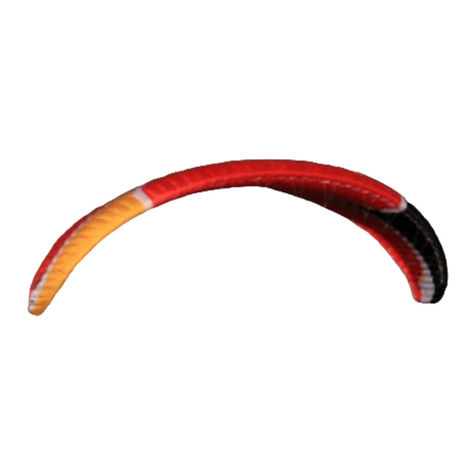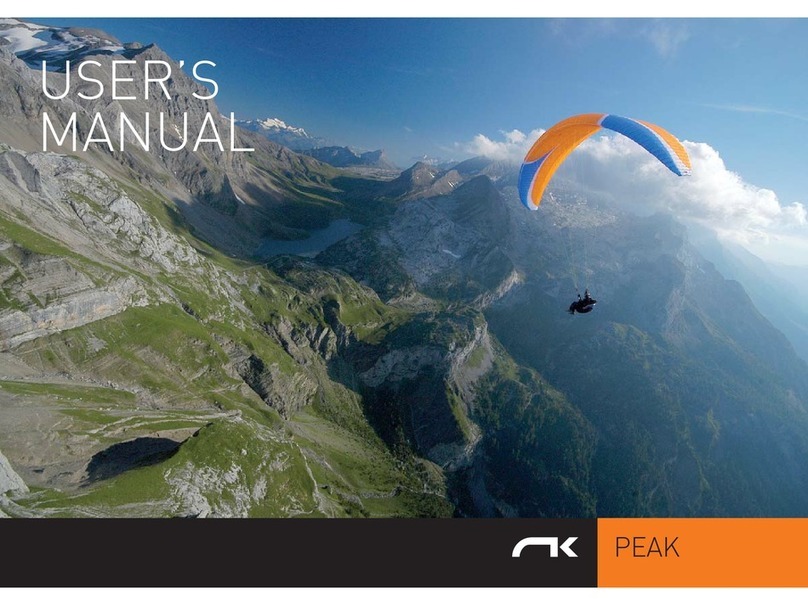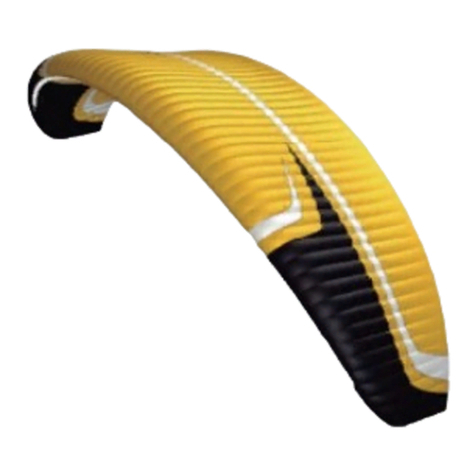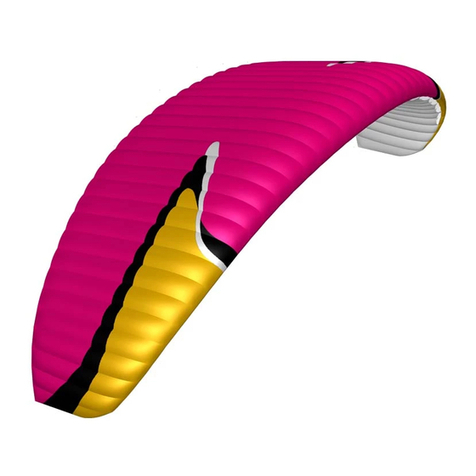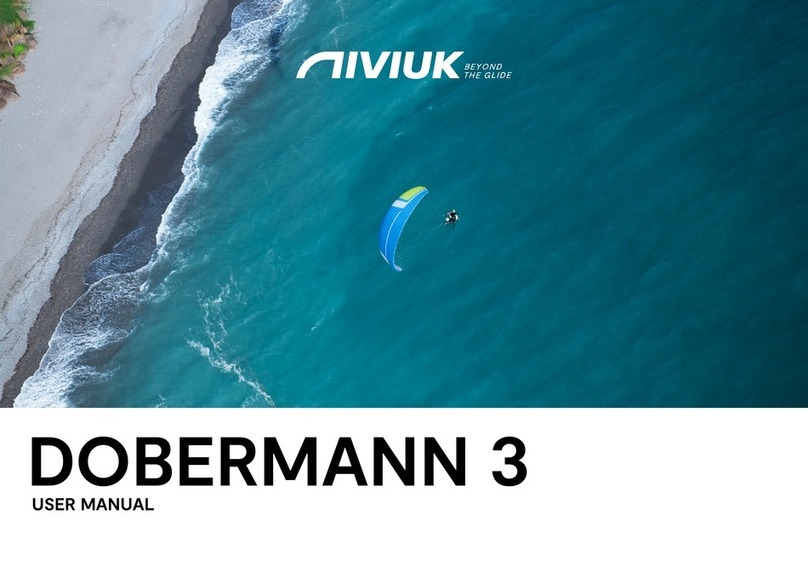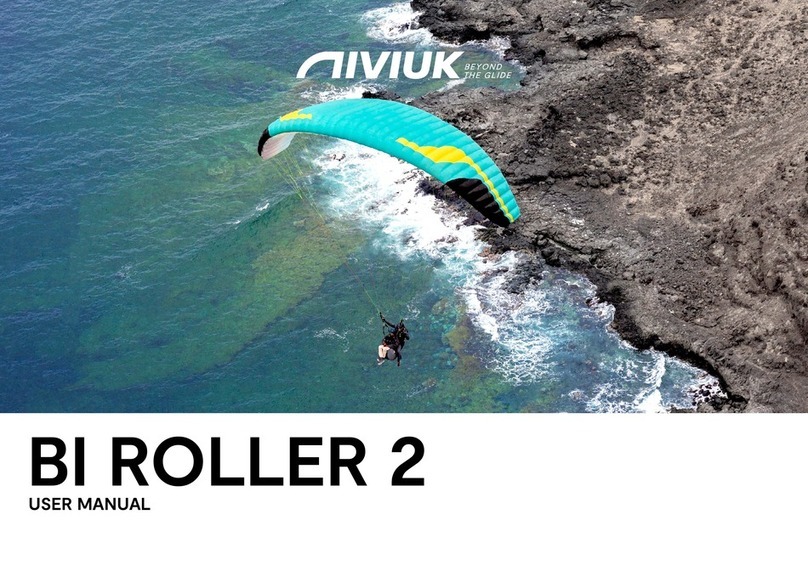
8
UNPACKING AND
ASSEMBLY
Assembling the harness
Connecting the harness to the wing
Adjusting the harness
We recommend that before your first flight the initial adjustment of the harness is made
using a hang frame.
Position the harness and hang it from the carabiners. Sit in the harness and close it. Then adjust it
to your personal preference using the adjustable straps.
To adjust the harness to your body shape, a number of easy-to-use adjustable straps have been
incorporated into the MAKAN.
The MAKAN has two carabiners to connect the harness to the paraglider. The right carabiner is
connected to the right riser of the wing. The left carabiner is therefore connected to the left riser.
PILOT POSITION
The MAKAN can be adjusted to regulate
the angle of the pilot. This angle can
be varied by adjusting the appropriate
straps.
The angle of the back and shoulder
straps can also be adjusted.
CHEST STRAP
The chest strap which controls the
distance between the two carabiners
can be adjusted from 36 - 45 cm (in
sizes XS-S and S-M) and from 40 - 49
cm (in sizes M-L and L-XL). For the
first flight with the MAKAN, we suggest
that the strap is set to the middle
position, and then gradually ensure
that the option that best suits your
needs is selected in flight. The optimum
adjustment will depend on the type of
wing you are flying with the MAKAN.
When the chest strap is tighter, the
wing feels more stable. However, over-
tightening the strap may enhance the
“twist” effect. A wide distance between
carabiners increases the
turning capacity.
SHOULDER STRAPS
The optimum adjustment of the shoulder
straps depends on the height of the pilot.
Sit up straight with chest strap and legs
loops closed and adjust the shoulder
straps symmetrically.
SPEED-BAR
The MAKAN comes fitted with a speed-
bar. It is important to adjust the harness
before adjusting the speed-bar, as the
position of the speed-bar depends on the
length of the legs.
Use a hang frame to adjust the speed-
bar before your initial flight.
Sit the harness and adopt your flying
position to adjust the cords symmetrically
on both sides.
If the cords are set too short, they can
cause constant tension on the speed
system, which could be dangerous.
Please remember that it is always
preferable for the speed-bar to be set
longer than shorter.
1
2
3
4
You will find a tutorial about the correct harness adjustment on our Youtube channel:
www.youtube.com/watch?v=ICWhXC0QyQ4



